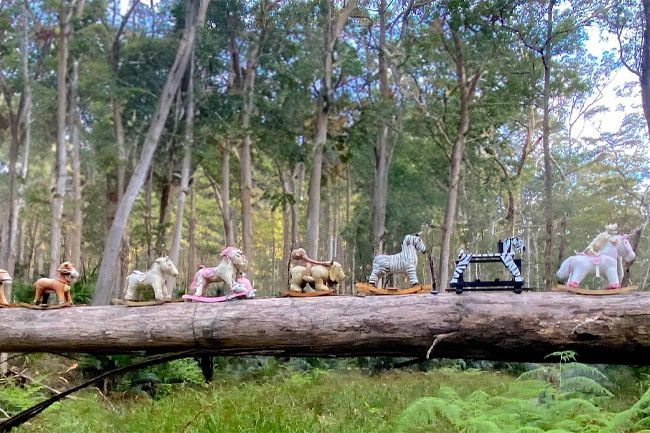For years, the Clyde Mountain rocking horses stood quietly along the Kings Highway, offering whimsical joy to passing drivers and their families. These handmade roadside icons were more than just decorations—they became local legends, loved by children and a quirky comfort to many. So, when they suddenly vanished, theories about their fate spread faster than any official explanation.
At first, the speculation was casual. People wondered if the horses were moved for repairs, or maybe taken down due to weather damage. But soon, rumors galloped into conspiracies, each one more elaborate than the last. From whispered pub conversations to alleged military operations, the mystery took on a life of its own.
One popular theory involved local government officials. Some locals claimed they overheard council workers mention “rocking horses,” “Kings Highway,” and “Clyde Mountain” in a suspicious order. That small clue was enough for many to suspect a council cover-up. While the council denied any involvement, public trust continued to wane.
Another theory suggested a high-level police operation. Locals reported seeing armed officers studying maps marked with targets not far from where the horses once stood. According to these stories, the operation had a code name—“Operation Rocking Horses.” It was said to be top secret, possibly linked to national security. The suggestion was wild, but strangely convincing to some.
Others blamed the National Parks and Wildlife Service. They believed a brumby cull might have accidentally included the wooden horses, and that an embarrassed agency quickly removed the evidence. The idea of helicopters mistakenly targeting rocking horses made people laugh—then pause. Stranger mistakes have happened.
The theories multiplied. Some imagined the horses were locked away in a police station, others floated the idea of a ransom demand sent to local schools. Meanwhile, one enterprising local even announced plans to open a toy store in Batemans Bay, with a special focus on rocking horses—capitalizing on nostalgia and outrage.
Eventually, the conversation turned philosophical. One patron noted how quickly we fill in blanks with fantasy when official answers are lacking. The disappearance may seem minor, yet it stirred deep emotions and fierce loyalty. Locals weren’t just missing toys—they were mourning a beloved roadside tradition.
As the dust settled, no one stepped forward with definitive proof. No agency accepted responsibility. No culprits were revealed. And despite all the creative theories, the truth remains buried under layers of rumor and wit.
But perhaps the greatest lesson from the Clyde Mountain rocking horse conspiracy isn’t about what happened—it’s about how communities respond when something whimsical and cherished vanishes without explanation. The story, like the horses, still rides on—one legend at a time.






